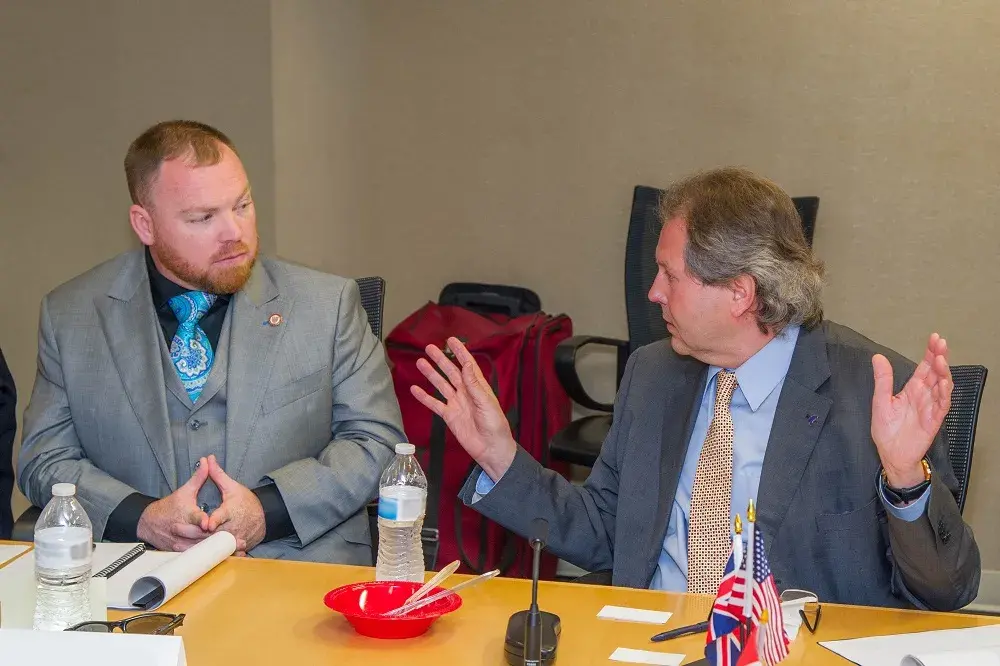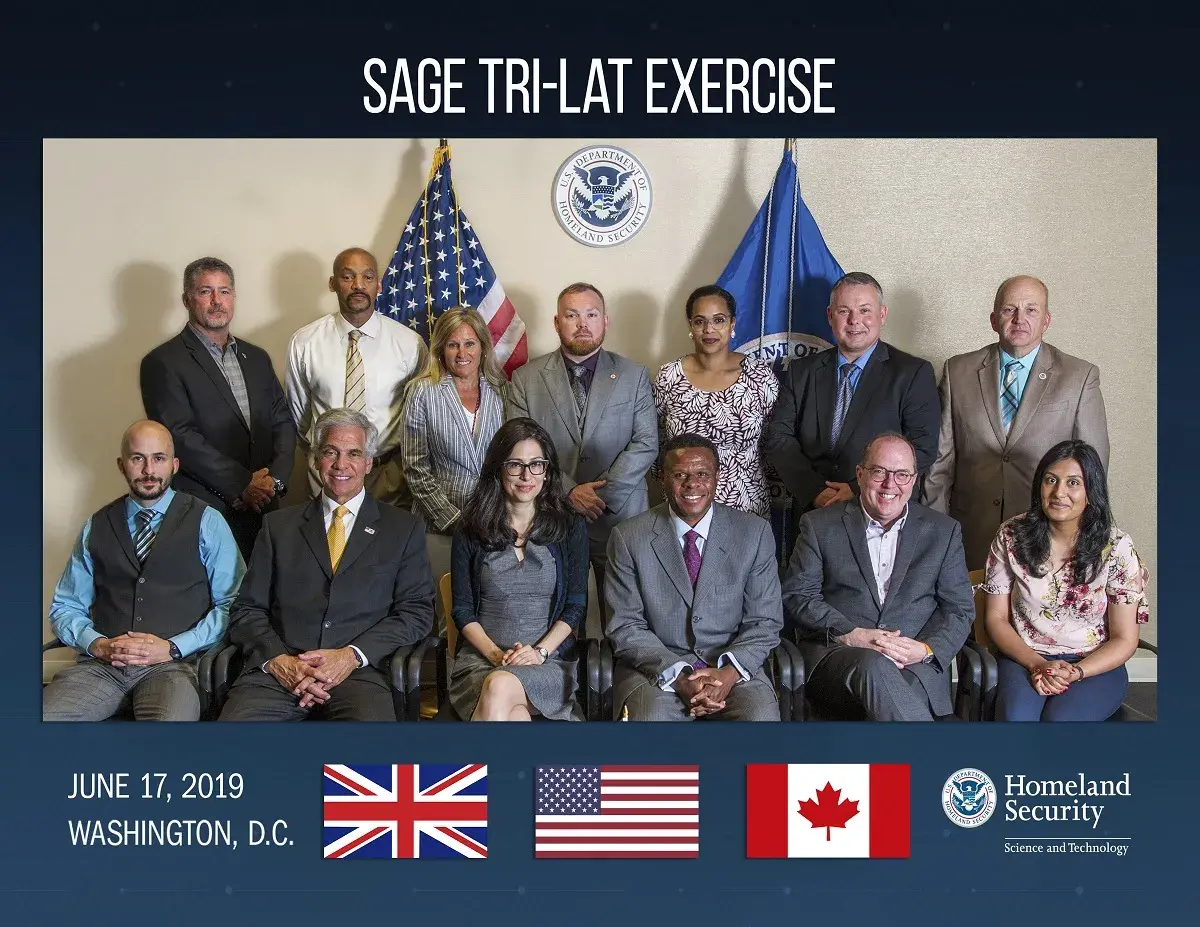Every emergency response entails an element of science; successful emergency response requires the latest science.
 The Department of Homeland Security (DHS) Science and Technology Directorate (S&T) ensures those charged with protecting the nation have the latest scientifically-backed best practices at hand, allowing them to make critical decisions confidently and in a timely manner. These best practices are maintained in the Science Advisory Guide for Emergencies (SAGE), a supplemental tool that provides up-to-date scientific and technical support for homeland security threats, emergencies, and major disasters. SAGE accomplishes this through a robust network of subject matter experts (SMEs) who, during times of need, are ready to provide the DHS Secretary with a current and reliable assessment of how to respond to the threat at hand, as well as to recommend the most appropriate preparedness measures and post-event recovery steps.
The Department of Homeland Security (DHS) Science and Technology Directorate (S&T) ensures those charged with protecting the nation have the latest scientifically-backed best practices at hand, allowing them to make critical decisions confidently and in a timely manner. These best practices are maintained in the Science Advisory Guide for Emergencies (SAGE), a supplemental tool that provides up-to-date scientific and technical support for homeland security threats, emergencies, and major disasters. SAGE accomplishes this through a robust network of subject matter experts (SMEs) who, during times of need, are ready to provide the DHS Secretary with a current and reliable assessment of how to respond to the threat at hand, as well as to recommend the most appropriate preparedness measures and post-event recovery steps.
In June 2019, S&T, in coordination with the governments of Canada and the UK, organized a trilateral exercise aimed at testing the robustness of SAGE under a hypothetical scenario focused around a national-level response to an infectious pathogen. Although the scenario was based on responding to a public health threat, the exercise was planned to generally draw out:
- Best practices, common capability gaps, and individual shortcomings among the three nations, as they each tackled the same scenario but according to their own national procedures and the unique characteristics of their nations;
- Obstacles to information sharing, particularly as it relates to time pressure, roles, responsibilities, and the flow and granularity of information needed for each nation to carry out its procedures.
“The exercise further improves national security by building partnerships with international experts with the ability to ensure timely and accurate scientific advice to lawmakers and response officials,” said Cody Gregory, S&T SAGE Program Manager.
The U.S. response to the hypothetical scenario was split into two phases: (1) scientific reporting and (2) SAGE activation. In the first phase, a team was assembled to assess the threat: determining a possible cause, identifying at-risk populations, and specifying the key stakeholders, like which agencies were responsible for directly responding to the threat. The aim of the first phase was to provide the Under Secretary for Science and Technology with a scientifically-backed and timely evaluation of the threat. In the second phase, SAGE was activated, and S&T leadership worked with SMEs to find answers to the DHS Secretary’s pressing questions. The aim of the second phase was to provide the DHS Secretary with expert-vetted answers, so the DHS Secretary could make informed decisions.
Preliminary outcomes of the exercise on the U.S.’s part showed strong two-way communication between S&T Acting Deputy Under Secretary André Hentz and SMEs – underlining SAGE as a key part to ensuring the success of S&T leadership’s role as the main science advisor to the DHS Secretary. During the scenario, S&T leadership demonstrated quick and extensive access to SMEs with backgrounds in academia, government, and industry, allowing for a comprehensive and rapid response to DHS Secretary inquiries.
 Commenting on lessons learnt from the trilateral exercise, Andrew Kaye from the UK Government Office for Science said, “The UK has benefited hugely from seeing how the U.S. and Canada design and conduct exercises. Above all, this engagement provided the perfect opportunity to build and consolidate critical science relationships with our closest allies."
Commenting on lessons learnt from the trilateral exercise, Andrew Kaye from the UK Government Office for Science said, “The UK has benefited hugely from seeing how the U.S. and Canada design and conduct exercises. Above all, this engagement provided the perfect opportunity to build and consolidate critical science relationships with our closest allies."
Commenting on lessons learnt from the trilateral exercise, the Office of the Chief Science Advisor of Canada said, “For Canada, this exercise helped orient us to how science is currently used in truly complex emergencies and how the science advice in emergencies can be improved.”
“S&T leadership recognizes the importance of science and technology in preparing for, responding to, and recovering from emergencies. Establishing best practices in partnership with our Canadian and UK allies through a program like SAGE is an important part of ensuring that we are always ready to provide the best advice for protecting the homeland,” said Hentz.
Looking forward, the team behind SAGE is working to make the guide a resource that is recognized department‑wide. The team is also continuing to engage offices outside of DHS, like the White House Office of Science and Technology Policy, as a way of coordinating and strengthening the homeland security stance of our nation. Additionally, S&T’s SAGE team will continue its collaboration with the UK’s Government Office for Science and the Office of the Chief Science Advisor of Canada, building from the lessons learnt in this exercise and planning for future ones.
For more about SAGE and S&T’s other initiatives, find us on Facebook, LinkedIn, and Twitter, or subscribe to our email list to get timely updates delivered directly to your inbox.
Caption:
1. Cody Gregory – S&T and the one on the right, Juergen Richt – Kansas State University discuss best practices.
2. SAGE Trilateral exercise.
